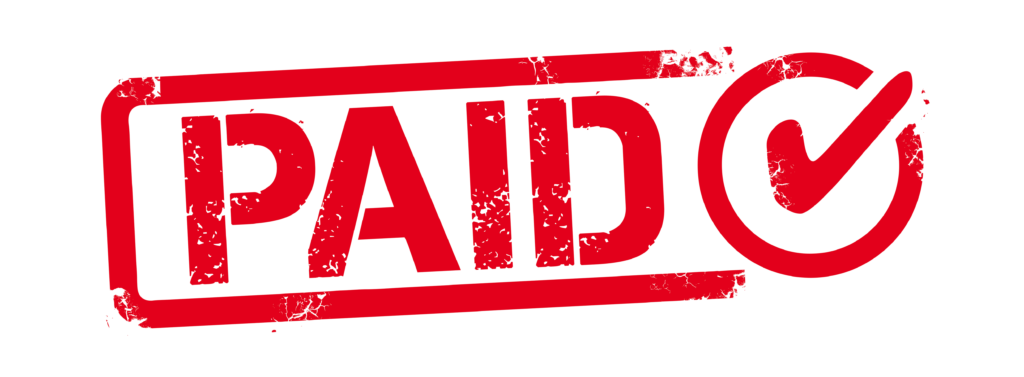How quickly you get your AR back to “normal” depends on many factors. Sixteen months have passed since Covid-19 caused a global health crisis and economic upheaval. Prior to discussing AR, we must pause a moment and reflect on the friends and loved ones lost and the subsequent disruption. The disruption to everyday life has been immense and felt across the world. It has affected home life, work, school, and our social interactions with others. After more than a year, we are grateful to all those that created vaccines to squash Covid-19. Each day we feel we are one step closer to getting back to “normal”.
Good News – Bad News
What does normal look like in the business world? One could say there isn’t a normal right now. We are still dealing with disruptive forces in the economy. Product/material shortages, staffing shortages, inflation, and supply chain issues are just a few of the challenges. From today’s headlines, it seems like any bit of good news is followed up by more bad news:
- The auto industry was just picking up when a computer chip shortage brought disruption causing low inventories and layoffs.
- The real estate boom has created a shortage of existing and new home inventory for sale. Home prices are high for new and existing homes, which is good news for sellers but bad news for buyers.
- The construction industry is like the real estate market, yet the cost of supplies has increased greatly, fueling higher construction costs.
- The vacation industry is making a comeback. Airlines are struggling to keep up with hiring and travelers who hope to rent automobiles are seeing prices go through the roof!
- Many businesses are struggling to keep up with hiring. It’s common to see the drive through window at your favorite fast food establishment open, but the inside seating area is closed because of staffing issues.
Clients Tell Us About AR Performance
How do all these forces affect AR performance? When we have this conversation with clients, they tell us about the AR challenges they are facing today:
- The customer won’t prioritize paying our client because they say they are behind with all suppliers.
- In industries that rebounded, clients suspect some customers are taking advantage of the disruption in the economy by seeing how far they can stretch their repayments.
- Customers say they are closed temporarily and will pay when they reopen their business. These customers rarely have a specific plan or timeline for paying off their balance.
- Finally, do you have customers that just stopped responding? Our clients do not know if these customers are in business or out of business. They can’t discern if their customer intends to pay or is never going to pay.
In House Efforts and 3rd Party Assistance
Our recovery team is skilled at navigating through these challenges and clients that follow these basic steps can enhance their in-house recovery efforts. We recommend:
- Contact and communication are the key. Get the customer to talk through their issues with you and share their plans to repay their invoices. Customers that communicate are often worth saving!
- Plans and commitments. If your customer is communicating, get them to commit to repayment terms that are acceptable to you. It’s optimal to keep payment plans to a short, reasonable time period such as, thirty days, sixty days, or ninety days at the most. If they require more time, the chances of them following through diminish.
- Follow up and accountability. Let the customer know before the plan begins that their account will escalate if they default on payments. This holds them accountable and increases their likelihood of following through with their payments.

For customers that choose not to cooperate or don’t communicate, 3rd party collections helps you recoup your money. We have several advantages that generate success:
- Correct Contact Information: Emerging from the pandemic, it’s not enough to have a phone number or email address for your customers, you need secondary and tertiary contact information. There are layoffs and reassignments. There is a good chance the people who pay the invoices are working at home, not at the office. We have the time and resources to find the right contacts and increase your chances of getting paid.
- Ability to perform a financial assessment. When negotiating payments, we are checking background facts about each customer’s history. Have other creditors sued? Does the company have tax liens? Do they have the ability to borrow funds? Have they received PPP funds? We gather this information to help us negotiate from a stronger position and maximize payment in the shortest time frame.
- Professional persistence. Our clients are surprised at the amount of time we put into just one of their accounts. They see how nimble we are and how we have the ability to follow up with professional persistence to see commitments through to the finish.
Divide and Conquer
We’ll continue to hear plenty about getting back to normal for a long time! Who has time to wait for normal? AR recovery is dynamic, with the chances of recovery dwindling each and every day. Focus your team’s efforts on customers with AR that is likely to pay and where the customer is most likely to continue their business relationship. Investing too much time and labor chasing lesser quality AR has the double negative impact of taking resources away from your better AR and decreasing the overall performance of your entire AR portfolio.
Focus your team on controlling the AR that will follow through with payment. Let your collection partner revitalize your aging by cleaning up the problem AR. When your partner focuses on cleaning up the problems, you and your staff can use your efforts to accelerate the customers that will support your company for years to come! Derek Vidor assists Receivables Control’s clients in implementing creative AR recovery solutions.
